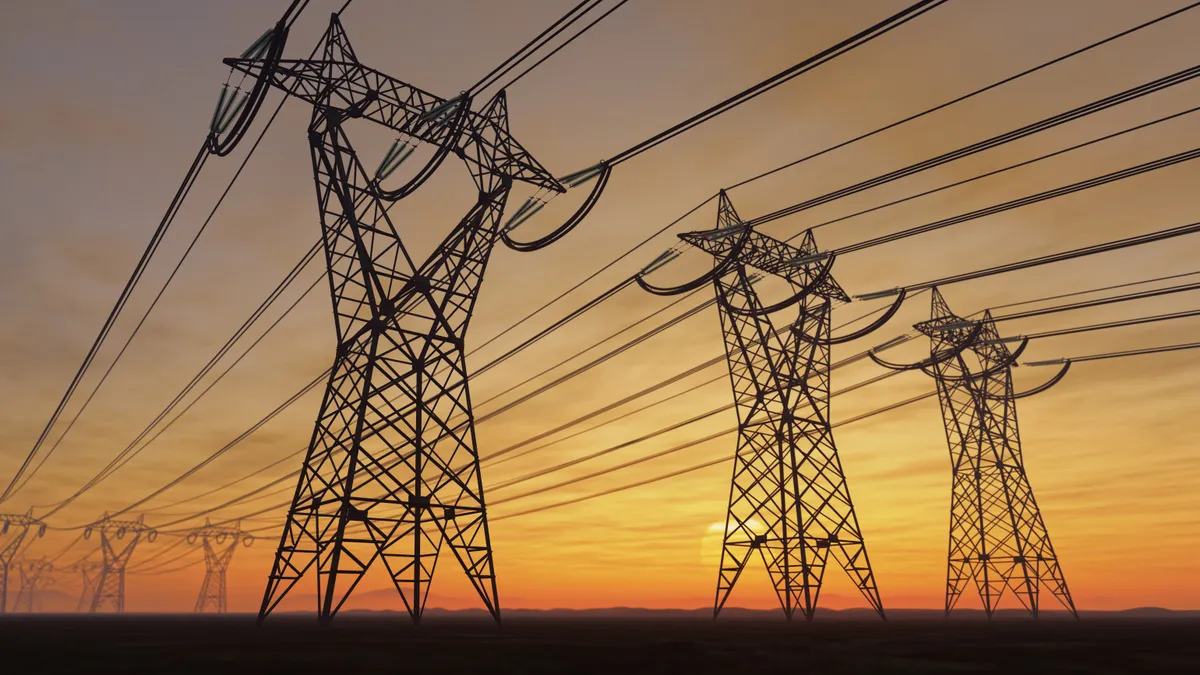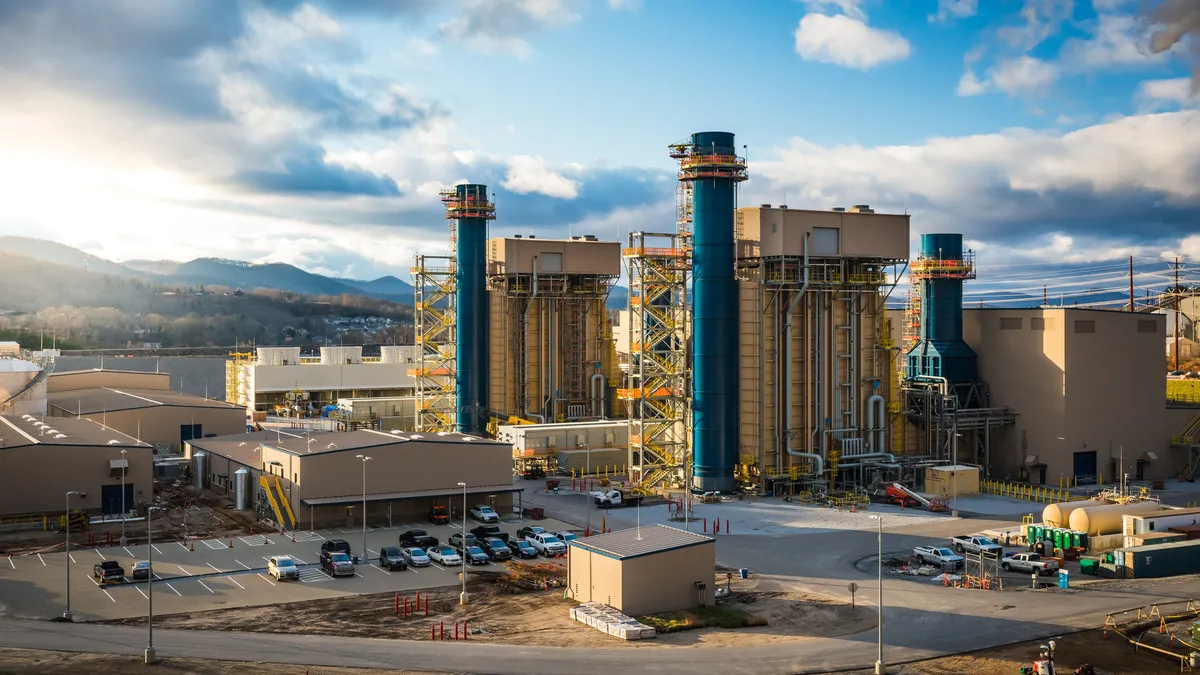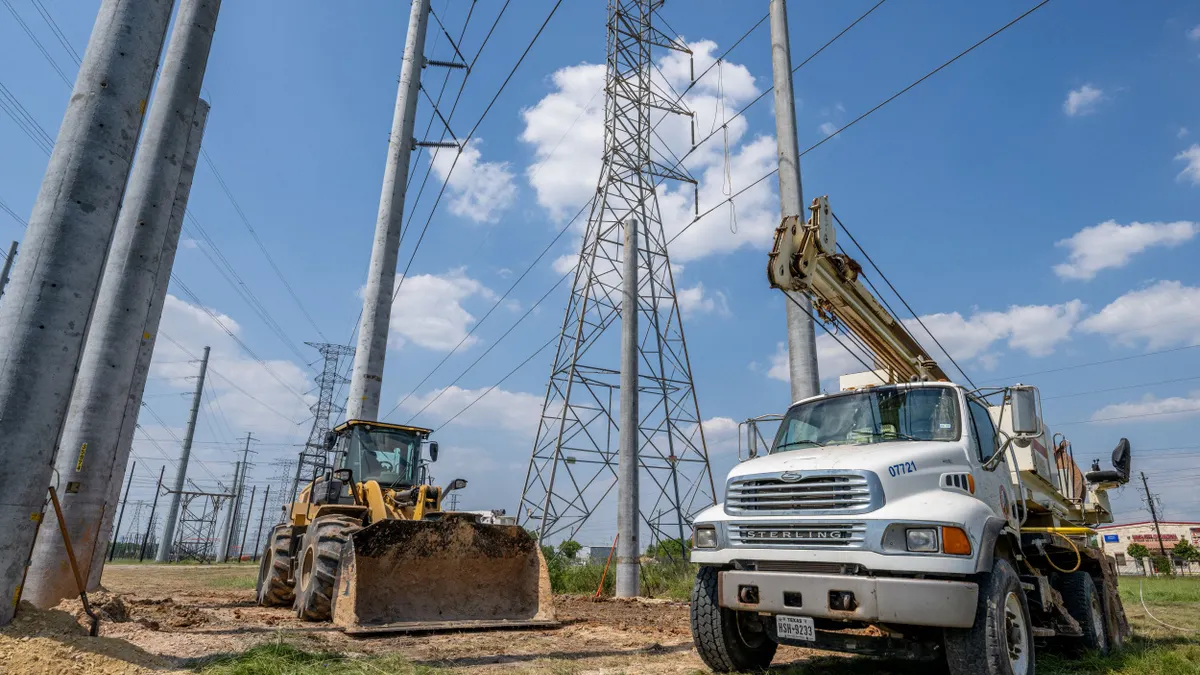In an effort to make the existing transmission system more efficient, the Federal Energy Regulatory Commission ordered all transmission owners to consider ambient conditions when determining how much power can flow through their power lines.
The rule issued Thursday gives transmission owners three years to use the new line ratings after they file compliance plans at FERC.
Generally, transmission owners use conservative assumptions about the worst-case, long-term air temperature and other weather conditions when setting line ratings, FERC staff said Thursday at the agency's monthly meeting.
Those line ratings, called seasonal or static ratings, are typically updated only when equipment is changed or weather assumptions are revised, FERC staff said.
Ambient-adjusted ratings, which are already used by some utilities, take into account near-term changes in temperature and solar heating values. On average ambient-adjusted ratings allow more power to move over power lines than static line ratings, FERC staff said.
"If we are going to meet the needs of the grid of the future while keeping customer rates just and reasonable and maintaining grid reliability, we need to squeeze everything out of our existing grid."

Richard Glick
Chairman, Federal Energy Regulatory Commission
The rule requires regional transmission organizations and independent system operators to put in place the systems and procedures needed to allow transmission owners to update their transmission line ratings at least hourly.
FERC declined to require transmission operators to use "dynamic" line ratings, but announced a separate docket to explore the issue. Dynamic line ratings are set using up-to-date temperature forecasts, plus other weather conditions such as wind, cloud cover, solar heating intensity and precipitation, as well as transmission line conditions such as tension or sag, FERC staff said.
"If we are going to meet the needs of the grid of the future while keeping customer rates just and reasonable and maintaining grid reliability, we need to squeeze everything out of our existing grid," FERC Chairman Richard Glick said. "Today's final rule is a huge step forward in making more efficient use of our transmission system."
FERC may break transmission ANOPR into several rulemakings
On another transmission issue, Glick outlined the possible timing for a rulemaking governing transmission planning, cost allocation and generator interconnection reform.
FERC is still reviewing the scores of comments it received on its advanced notice of proposed rulemaking (ANOPR), Glick said during a media briefing Thursday.
Glick said he will try to reach an agreement with his fellow commissioners on how to handle issuing a proposed rule.
He said he hopes to issue a proposed rule early next year, with a final rule coming before the end of 2022.
However, depending on what his colleagues think, FERC may issue several proposed rules, according to Glick.
"No decisions have been made, but we may have to divvy up some of these issues into different rulemakings, maybe two or three different rulemakings, depending on how difficult the task is and how different commissioners view different issues," Glick said.
FERC staff seeks $40 million fine from pipeline company
FERC's Thursday meeting featured action around the gas sector, with several projects undergoing scrutiny.
Natural gas pipeline company Energy Transfer Partners and Rover Pipeline subsidiary should pay $40 million for allegedly using unapproved toxic substances and other permit violations, according to FERC staff.
"When a pipeline developer receives a public convenience and necessity, its obligations do not end when the pipeline commences operation," Glick said. "If the company fails to comply with certificate conditions, it is imperative that the commission makes clear there are serious consequences, including significant financial penalties and, if all else fails, revocation of the certificate itself."
FERC staff contends Energy Transfer Partners violated its commission-approved certificate when it built its $6.7 billion Rover pipeline, which runs from Pennsylvania and West Virginia across Ohio into Michigan.
In 2017, contractors used diesel fuel and other toxic substances and unapproved additives in drilling "mud" when drilling under a river in Ohio. About 2 million gallons of the mud was accidentally released and flowed into a nearby protected wetland, according to FERC's "show cause" order.
FERC's orders "place a spotlight on the certification process in a way that should motivate industry to help identify reforms that would build public confidence in the commission's decision-making and compliance oversight."

Allison Clements
Commissioner, Federal Energy Regulatory Commission
Separately, FERC staff in March said Energy Transfer Partners should pay $20.2 million for misleading the agency about plans to destroy a historic building to clear a path for the Rover pipeline. That "show cause" process is underway at FERC.
FERC on Thursday also directed its enforcement office to review the possible failure of Midship Pipeline to adequately restore the right-of-way along a 200-mile pipeline in Oklahoma, with possible penalties if the company is found to have violated the terms of its permit.
Action on the Rover pipeline, three orders related to the Midland pipeline, and decisions vacating permits issued to the now-defunct Jordan Cove liquefied natural gas (LNG) project and a related pipeline as well as the PennEast pipeline highlight skepticism around FERC's pipeline approval process and pipeline development generally, Commissioner Allison Clements said.
The orders "place a spotlight on the certification process in a way that should motivate industry to help identify reforms that would build public confidence in the commission's decision-making and compliance oversight," Clements said.
Clements said FERC should revise its process for reviewing proposed natural gas pipelines and LNG facilities as soon as possible with a "more searching evaluation" of whether a project is needed.
"We should contemplate whether a need determination should consider how future demand for the project could be affected by policy change or private industry initiatives to reduce greenhouse gas emissions," Clements said.
FERC should also make a decision on whether it should require greenhouse gas mitigation measures to offset carbon emissions from new pipelines and LNG plants, Clements said.
Christie sees need for more gas pipelines
Meanwhile, FERC Commissioner Mark Christie pointed to reports from ISO New England and the Midcontinent Independent System Operator about possibly not having enough natural gas to meet wintertime needs.
"We're going to have to face the reality that the need for gas-fired generation is not going to go away next month, next year," Christie said. "We're going to have to deal with that and be willing to build the transportation facilities to get the gas to the generators so we can keep the lights on."
Christie's comments came a day after Sen. John Barrasso, R-Wyoming, said in a letter to FERC that the agency was threatening the United States' energy security. Barrasso said FERC appears to be approving natural gas infrastructure proposals too slowly.
"We're going to have to face the reality that the need for gas-fired generation is not going to go away next month, next year."

Mark Christie
Commissioner, Federal Energy Regulatory Commission
Glick told reporters the agency's extra review of how proposed natural gas projects could affect greenhouse gas emissions is in response to court decisions indicating agency permitting approvals have been flawed, according to Glick.
Glick said it makes no sense to issue flawed decisions that get reversed in court. "That's real delay, we're talking years of delay," Glick said, noting delays increase developers' costs.
"If we don't cross our t's and dot our i's in the regulatory process of FERC, and do the siting, certification and all the environmental reviews right the first time, we're not going to achieve what we want to achieve, which is more certainty and to expedite the process," Glick said.























